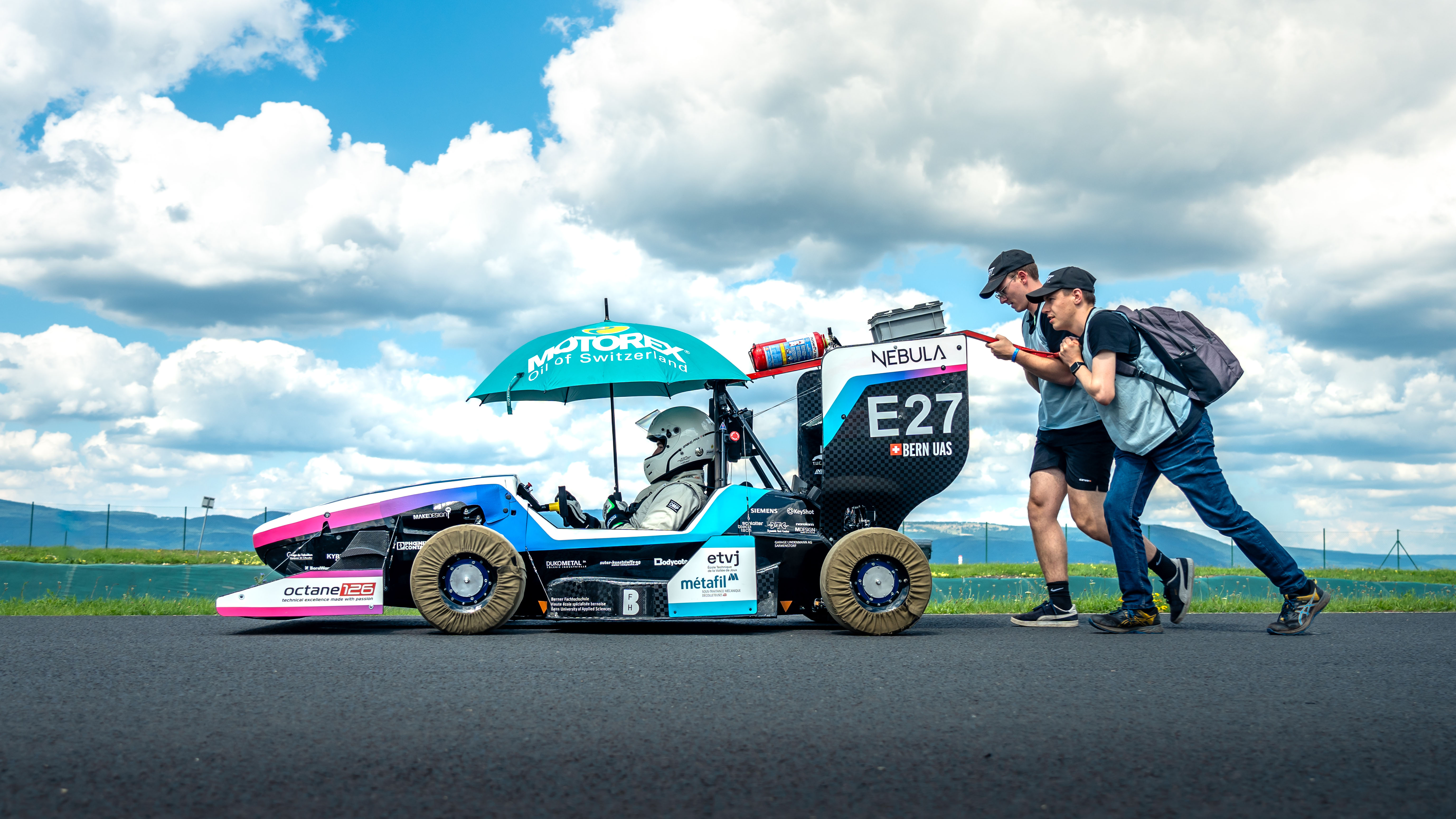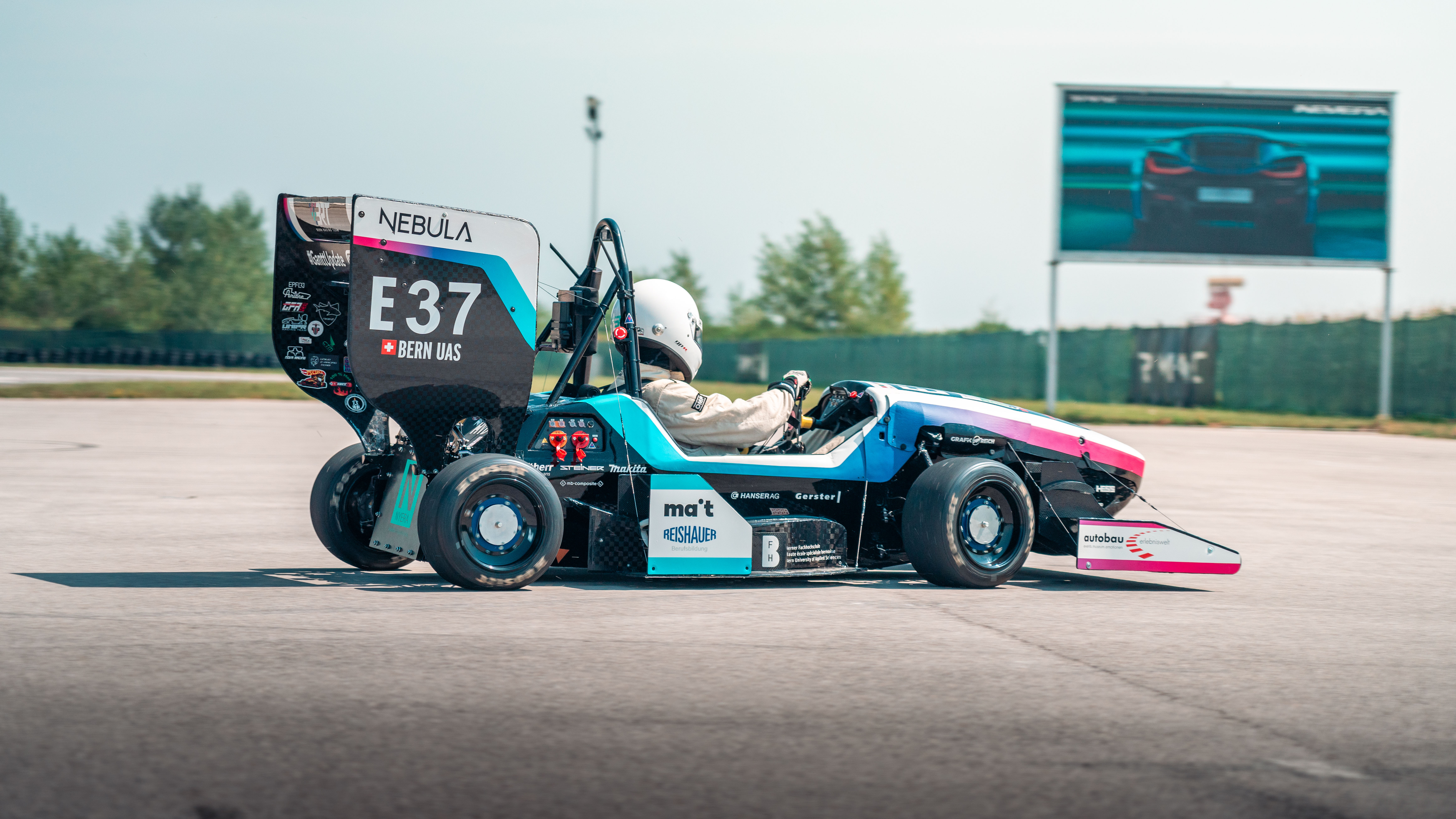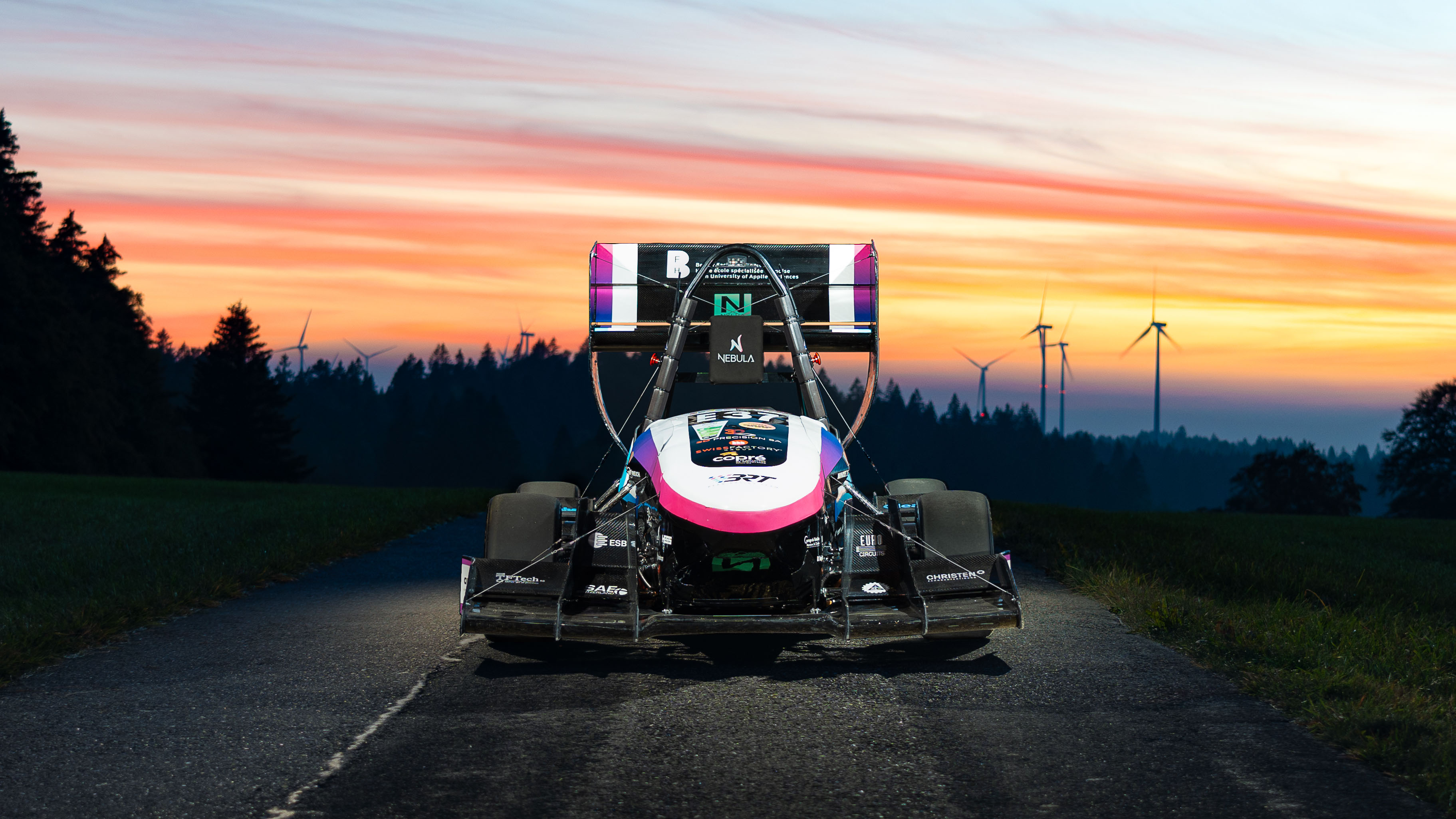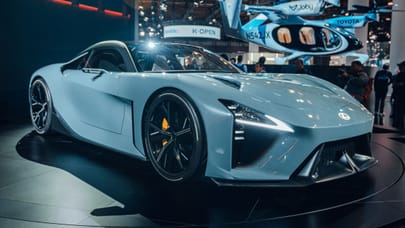
Here's how you make a Formula Student competition car
Ingredients: over 20,000 build hours and £250,000 in sponsorship. Bern University student engineer tell us more
While most undergraduates tend to spend their time nursing hangovers and mulling over empty pockets, some do know how to use their time productively. Especially those with ambitions of entering the motorsport sector through the ‘Formula Student’ program - a worldwide time attack competition consisting of over 650 teams.
Sébastien Cavedon from the Bern University of Applied Science’s racing team is just one of many emerging student engineers hoping to be talent-spotted. He sat down for a chat with TopGear.com during the 2024 Geneva Motor Show to discuss his team’s competitor for last season, ‘Nebula’, and just how much work goes into grafting their trade.
“Nebula was built in nine months and took around 20,000 hours to complete between 55 of us. Everything you see is engineered and assembled in our free time.”
For some perspective, this averages out at over 15 continuous work days per team member. Impressive, considering they also need to find time for, well, the whole studying thing. But the result of the efforts that the Bern Racing Team (BRT) has put into Nebula is telling.
“There are five teams from Switzerland at present, and last year we finished second. We’re very proud of what we achieved, considering we had to learn how to control and channel aerodynamics ourselves, and how to sculpt the body to be as efficient as it can be under the financial constraints that we have.”
It’s also worth noting that while some teams can spend millions developing their cars, BRT has so far accumulated over £250,000 worth of sponsorship funding. So, how have they made Nebula punch above its weight?
“The most important thing for us is the mechanical grip since we rarely exceed 60mph during events. We produce around 100kg of downforce at 50mph, which remains our strongest asset alongside acceleration.”
For some perspective, Nebula can get from 0-60mph a hair’s breadth quicker than a Porsche Carrera GT. So the powertrain must be pretty potent, right?
“We have a planetary gearbox and a wheel hub solution with a motor at each wheel, so it’s four-wheel drive. The blue and grey metal part you see is the gearbox, and the 140kW motor is directly inside it. It’s a very compact solution, and that means quick steering and better dynamics all around.”
And lastly, how will BRT improve Nebula’s successor for next season?
Top Gear
Newsletter
Thank you for subscribing to our newsletter. Look out for your regular round-up of news, reviews and offers in your inbox.
Get all the latest news, reviews and exclusives, direct to your inbox.
“We want to focus more on weight, with the goal being to shed around 25kg down to below 240. This may seem like a lot, but Nebula wasn’t built to be light: it was built to be reliable. This year we want to reverse those roles slightly, and put time into improving the car with finer details to see what we can accomplish when the car truly hits peak potential.”
Trending this week
- Car Review
BMW iX3










